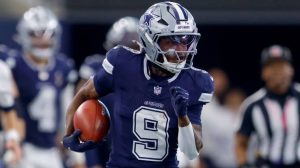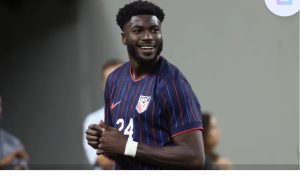Bulls Must Be Cautious Targeting Draft Prospect Reminiscent of Patrick Williams.
As the Chicago Bulls prepare for the upcoming NBA Draft, speculation has begun swirling about potential prospects the team may target. Among the most polarizing are players described as “high-upside projects” — raw, tools you forwards who resemble former fourth overall pick Patrick Williams. But while it’s tempting to double down on a familiar mold, the Bulls must proceed with caution before investing another premium pick in a similar type of player.
Patrick Williams, drafted in 2020 out of Florida State, was viewed as a long-term investment. At 6’7” with a 7-foot wingspan, elite athletic tools, and defensive potential, he checked every box physically. He also came off the bench in college, averaging just 9.2 points per game, which signaled he was far from a finished product. Chicago’s front office, then led by Artur as Karnisovas and Marc Reversely, saw the potential to develop Williams into a star — a two-way wing who could anchor their defense and evolve into a go-to scorer.
Four years later, Williams has shown flashes of brilliance but struggled with consistency, aggression, and availability. Injuries have stalled his development, and despite evident growth in his shooting and defensive reads, he hasn’t yet made the leap from promising to reliable. As he enters restricted free agency, the Bulls still face uncertainty about what he can ultimately become. That ambiguity should serve as a warning sign heading into this year’s draft.
The 2024 draft class features several prospects who fit the Williams archetype: long-limbed combo forwards with intriguing defensive potential, limited college production, and a need for development time. Players like Ron Holland (G League Ignite), Matas Buzelis (G League Ignite), and even Cody Williams (Patrick’s younger brother from Colorado) are among those frequently mocked to teams in the mid-to-late lottery. While all have upside, they also come with the same risks Chicago knows too well.
The danger of selecting another “project” is twofold. First, the Bulls are in a state of flux. With DeMar DeRozan aging, Lonzo Ball’s return still uncertain, and Zach LaVine’s future unclear, the franchise sits in an awkward middle ground — neither rebuilding nor contending. They lack a clear direction. Drafting a high-risk prospect who needs years of development could further delay progress and frustrate a fan base desperate for identity and success.
Second, Chicago doesn’t have a proven track record of player development, particularly with wings. Beyond Williams, the team has struggled to maximize the talents of other young players like Coby White (until this past season), Dale Terry, and even Lauri Marksmen, who didn’t blossom until he left for Utah. Without a robust player development infrastructure, choosing another high-upside project may be more hopeful than strategic.
That’s not to say the Bulls should avoid all prospects with raw skills or high ceilings. But they must balance potential with readiness. The team would benefit from targeting players who bring translatable NBA skills from Day 1 — whether that’s shooting, defense, or playmaking. Someone like Dalton Kinect, a polished scorer out of Tennessee, or Devin Carter, a tough-nosed guard from Providence, might not have the same ceiling as a Ron Holland, but they may provide more immediate help and reliability.
It’s also important to evaluate how a prospect fits into Chicago’s current system and timeline. The Bulls have built around half-court offense and mid-range scoring, with limited floor spacing and ball movement. Adding another athletic forward who needs touches and development time might create redundancy or slow overall team chemistry.
Additionally, the organization must learn from past mistakes. Drafting based on potential over production is not inherently wrong — in fact, it’s often how stars are found. But it requires patience, structure, and a clear developmental roadmap. If the Bulls truly believe in a raw prospect, they must also commit to building the support around him: coaching, minutes, confidence, and defined roles.
That’s what has been missing with Patrick Williams. He has the talent to be a game-changer but hasn’t been consistently empowered or prioritized. His usage rate has remained low, and he’s rarely put in situations where he can fail, grow, and learn. Chicago cannot repeat that cycle.
There’s also the matter of optics. Repeating the same draft strategy, especially when the results are still inconclusive, could be perceived as stubbornness or lack of creativity by the front office. Fans may question the decision to invest in yet another “high-upside” forward without first maximizing the one they already have.
In conclusion, the Bulls must approach this draft with fresh eyes and an honest assessment of their identity. While it’s understandable to be intrigued by players reminiscent of Patrick Williams — long, athletic, and full of upside — the team cannot afford to chase potential without a plan. If the Bulls truly want to build a sustainable future, they need to target prospects who fit their needs, timeline, and developmental capacity.
A repeat of the Williams experiment — without learning from it — would be a step backward, not forward.






